
This illustration depicts an uneven ring of dust orbiting KIC 8462852, also known as Boyajian’s Star or Tabby’s Star. Credit: NASA/JPL-Caltech
A team of more than 200 researchers, including Penn State Department of Astronomy and Astrophysics Assistant Professor Jason Wright and led by Louisiana State University’s Tabetha Boyajian, is one step closer to solving the mystery behind the “most mysterious star in the universe.” KIC 8462852, or “Tabby’s Star,” nicknamed after Boyajian, is otherwise an ordinary star, about 50 percent bigger and 1,000 degrees hotter than the Sun, and about 1,000 light years away. However, it has been inexplicably dimming and brightening sporadically like no other. Several theories abound to explain the star’s unusual light patterns, including that an alien megastructure is orbiting the star.
The mystery of Tabby’s Star is so compelling that more than 1,700 people donated over $100,000 through a Kickstarter campaign in support of dedicated ground-based telescope time to observe and gather more data on the star through a network of telescopes around the world. As a result, a body of data collected by Boyajian and colleagues in partnership with the Las Cumbres Observatory is now available in a new paper in The Astrophysical Journal Letters.
“We were hoping that once we finally caught a dip happening in real time we could see if the dips were the same depth at all wavelengths. If they were nearly the same, this would suggest that the cause was something opaque, like an orbiting disk, planet, or star, or even large structures in space” said Wright, who is a co-author of the paper, titled “The First Post-Kepler Brightness Dips of KIC 8462852.” Instead, the team found that the star got much dimmer at some wavelengths than at others.
“Dust is most likely the reason why the star’s light appears to dim and brighten. The new data shows that different colors of light are being blocked at different intensities. Therefore, whatever is passing between us and the star is not opaque, as would be expected from a planet or alien megastructure,” Boyajian said.
The scientists closely observed the star through the Las Cumbres Observatory from March 2016 to December 2017. Beginning in May 2017 there were four distinct episodes when the star’s light dipped. Supporters from the crowdfunding campaign nominated and voted to name these episodes. The first two dips were named Elsie and Celeste. The last two were named after ancient lost cities — Scotland’s Scara Brae and Cambodia’s Angkor. The authors write that in many ways what is happening with the star is like these lost cities.
“They’re ancient; we are watching things that happened more than 1,000 years ago,” the authors wrote. “They’re almost certainly caused by something ordinary, at least on a cosmic scale. And yet that makes them more interesting, not less. But most of all, they’re mysterious.”
The method in which this star is being studied — by gathering and analyzing a flood of data from a single target — signals a new era of astronomy. Citizen scientists sifting through massive amounts of data from the NASA Kepler mission were the ones to detect the star’s unusual behavior in the first place. The main objective of the Kepler mission was to find planets, which it does by detecting the periodic dimming made from a planet moving in front of a star, and hence blocking out a tiny bit of starlight. The online citizen science group Planet Hunters was established so that volunteers could help to classify light curves from the Kepler mission and to search for such planets.
“If it wasn’t for people with an unbiased look on our universe, this unusual star would have been overlooked,” Boyajian said. “Again, without the public support for this dedicated observing run, we would not have this large amount of data.”
Now there are more answers to be found. “This latest research rules out alien megastructures, but it raises the plausibility of other phenomena being behind the dimming,” Wright said. “There are models involving circumstellar material — like exocomets, which were Boyajian’s team’s original hypothesis — which seem to be consistent with the data we have.” Wright also points out that “some astronomers favor the idea that nothing is blocking the star — that it just gets dimmer on its own — and this also is consistent with this summer’s data.”
Boyajian said, “It’s exciting. I am so appreciative of all of the people who have contributed to this in the past year — the citizen scientists and professional astronomers. It’s quite humbling to have all of these people contributing in various ways to help figure it out.”
Blogs by Jason Wright: What we’ve learned about Boyajian’s star Parts 1 & 2
- http://sites.psu.edu/astrowright/2017/12/26/what-weve-learned-about-boyajians-star/
- http://sites.psu.edu/astrowright/2017/12/26/what-weve-learned-about-boyajians-star-ii/
TED Talk by Tabetha Boyajian: The most mysterious star in the universe:
Reference: “The First Post-Kepler Brightness Dips of KIC 8462852” by Tabetha. S. Boyajian, Roi Alonso, Alex Ammerman, David Armstrong, A. Asensio Ramos, K. Barkaoui, Thomas G. Beatty, Z. Benkhaldoun, Paul Benni, Rory O. Bentley, Andrei Berdyugin, Svetlana Berdyugina, Serge Bergeron, Allyson Bieryla, Michaela G. Blain, Alicia Capetillo Blanco, Eva H. L. Bodman, Anne Boucher, Mark Bradley, Stephen M. Brincat, Thomas G. Brink, John Briol, David J. A. Brown, J. Budaj, A. Burdanov, B. Cale, Miguel Aznar Carbo, R. Castillo García, Wendy J Clark, Geoffrey C. Clayton, James L. Clem, Phillip H Coker, Evan M. Cook, Chris M. Copperwheat, J. L. Curtis, R. M. Cutri, B. Cseh, C. H. Cynamon, Alex J. Daniels, James R. A. Davenport, Hans J. Deeg, Roberto De Lorenzo, Thomas de Jaeger, Jean-Bruno Desrosiers, John Dolan, D. J. Dowhos, Franky Dubois, R. Durkee, Shawn Dvorak, Lynn Easley, N. Edwards, Tyler G. Ellis, Emery Erdelyi, Steve Ertel, Rafael. G. Farfán, J. Farihi, Alexei V. Filippenko, Emma Foxell, Davide Gandolfi, Faustino Garcia, F. Giddens, M. Gillon, Juan-Luis González-Carballo, C. González-Fernández, J. I. González Hernández, Keith A. Graham, Kenton A. Greene, J. Gregorio, Na’ama Hallakoun, Ottó Hanyecz, G. R. Harp, Gregory W. Henry, E. Herrero, Caleb F. Hildbold, D. Hinzel, G. Holgado, Bernadett Ignácz, Ilya Ilyin, Valentin D. Ivanov, E. Jehin, Helen E. Jermak, Steve Johnston, S. Kafka, Csilla Kalup, Emmanuel Kardasis, Shai Kaspi, Grant M. Kennedy, F. Kiefer, C. L. Kielty, Dennis Kessler, H. Kiiskinen, T. L. Killestein, Ronald A. King, V. Kollar, H. Korhonen, C. Kotnik, Réka Könyves-Tóth, Levente Kriskovics, Nathan Krumm, Vadim Krushinsky, E. Kundra, Francois-Rene Lachapelle, D. LaCourse, P. Lake, Kristine Lam, Gavin P. Lamb, Dave Lane, Marie Wingyee Lau, Pablo Lewin, Chris Lintott, Carey Lisse, Ludwig Logie, Nicolas Longeard, M. Lopez Villanueva, E. Whit Ludington, A. Mainzer, Lison Malo, Chris Maloney, A. Mann, A. Mantero, Massimo Marengo, Jon Marchant, M. J. Martínez González, Joseph R. Masiero, Jon C. Mauerhan, James McCormac, Aaron McNeely, Huan Y. A. Meng, Mike Miller, Lawrence A. Molnar, J. C. Morales, Brett M. Morris, Matthew W. Muterspaugh, David Nespral, C. R. Nugent, Katherine M. Nugent, A. Odasso, Derek O’Keeffe, A. Oksanen, John M. O’Meara, András Ordasi, Hugh Osborn, John J. Ott, J. R. Parks, Diego Rodriguez Perez, Vance Petriew, R Pickard, András Pál, P. Plavchan, Don Pollacco, F. Pozo Nuñez, F. J. Pozuelos, Steve Rau, Seth Redfield, Howard Relles, Ignasi Ribas, Jon Richards, Joonas L. O. Saario, Emily J. Safron, J. Martin Sallai, Krisztián Sárneczky, Bradley E. Schaefer, Clea F. Schumer, Madison Schwartzendruber, Michael H. Siegel, Andrew P. V. Siemion, Brooke D. Simmons, Joshua D. Simon, S. Simón-Díaz, Michael L. Sitko, Hector Socas-Navarro, Á. Sódor, Donn Starkey, Iain A. Steele, Geoff Stone, Klaus G. Strassmeier, R. A. Street, Tricia Sullivan, J. Suomela, J. J. Swift, Gyula M. Szabó, Róbert Szabó, Róbert Szakáts, Tamás Szalai, Angelle M. Tanner, B. Toledo-Padrón, Tamás Tordai, Amaury H. M. J. Triaud, Jake D. Turner, Joseph H. Ulowetz, Marian Urbanik, Siegfried Vanaverbeke, Andrew Vanderburg, Krisztián Vida, Brad P. Vietje, József Vinkó, K. von Braun, Elizabeth O. Waagen, Dan Walsh, Christopher A. Watson, R. C. Weir, Klaus Wenzel, C. Westendorp Plaza, Michael W. Williamson, Jason T. Wright, M. C. Wyatt, WeiKang Zheng and Gabriella Zsidi, 19 January 2018, The Astrophysical Journal.
arXiv:1801.00732
DOI: 10.3847/2041-8213/aaa405

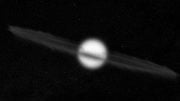
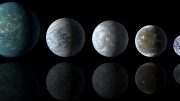
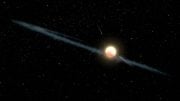
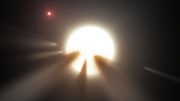
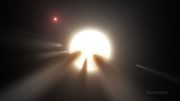

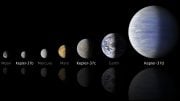
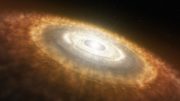
Be careful, don’t find out what it is too quickly, or the job security funding will run out.